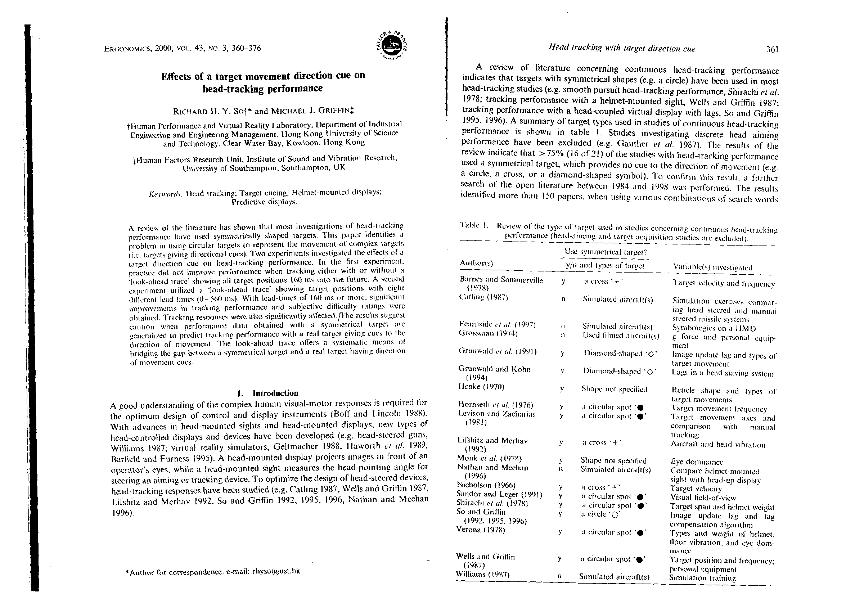Effects of a target movement direction cue on head- tracking performance

Contenido multimedia no disponible por derechos de autor o por acceso restringido. Contacte con la institución para más información.
| Tag | 1 | 2 | Value |
|---|---|---|---|
| LDR | 00000nab a2200000 i 4500 | ||
| 001 | MAP20071501762 | ||
| 003 | MAP | ||
| 005 | 20080418122937.0 | ||
| 008 | 010709e20000301gbr|||| | |00010|eng d | ||
| 040 | $aMAP$bspa | ||
| 084 | $a875 | ||
| 100 | 1 | $0MAPA20080207458$aSo, Richard H. Y. | |
| 245 | 1 | 0 | $aEffects of a target movement direction cue on head- tracking performance$cRichard H. Y. So and Michael J. Griffin |
| 520 | 8 | $aA review of the literature has shown that most investigations of head-tracking performance have used symmetrically shaped targets. This paper identifies a problem in using circular targets to represent the movement of complex targets (i.e. targets giving directional cues). Two experiments investigated the effects of a target direction cue on head-tracking performance. The results suggest caution when performance data obtained with a symmetrical target are generalized to predict tracking performance with a real target giving cues to the direction of movement. The look-ahead trace offers a systematic means of bridging the gap between a symmetrical target and a real target having direction of movements cues. | |
| 650 | 1 | 1 | $0MAPA20080550653$aErgonomía |
| 650 | 1 | 1 | $0MAPA20080555337$aMovimiento |
| 650 | 1 | 1 | $0MAPA20080578961$aAparato locomotor |
| 650 | 1 | 1 | $0MAPA20080597375$aLesiones articulares |
| 650 | 1 | 1 | $0MAPA20080557348$aBiomecánica |
| 700 | 1 | $0MAPA20080070625$aGriffin, M.J. | |
| 773 | 0 | $dLondon [etc.]$gVol. 43 nº 3, March 2000 ; p. 360-376$tErgonomics |

